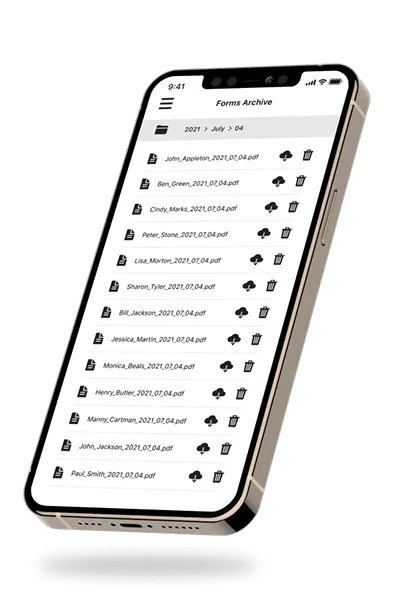Tattooing is an art form that requires both skill and responsibility. One of the most crucial aspects of running a successful tattoo studio is ensuring that you have proper consent from your clients. This is where tattoo consent forms come into play. In this comprehensive guide, we’ll dive deep into everything you need to know about tattoo consent forms, their importance, and how to effectively utilize them to protect both your business and your clients.
What is a Tattoo Consent Form?
A tattoo consent form is a legal document that a client must sign before getting a tattoo. This form serves several purposes:
- Legal Protection: It provides legal protection for both the tattoo artist and the client. By signing the form, the client acknowledges that they understand the risks involved in getting a tattoo and consent to the procedure.
- Health and Safety: It ensures that the client discloses any health conditions or allergies that might affect the tattoo process.
- Informed Consent: It confirms that the client has been informed about the tattoo procedure, aftercare instructions, and potential risks.
Why Are Tattoo Consent Forms Important?
- Legal Safeguard: In the event of a dispute or legal issue, the consent form can serve as evidence that the client was informed of the risks and agreed to proceed.
- Health and Safety Compliance: It ensures that you are compliant with health and safety regulations, which can protect your business from legal penalties and enhance your studio’s reputation.
- Client Trust: Providing a detailed consent form shows professionalism and builds trust with your clients, as they see that you take their health and safety seriously.
Key Elements of a Tattoo Consent Form
To be effective, a tattoo consent form should include the following elements:
- Personal Information: Collect the client’s full name, date of birth, address, phone number, and email.
- Health Questionnaire: Ask about any medical conditions, allergies, medications, or skin conditions that could impact the tattoo process.
- Description of the Tattoo: Include a detailed description of the tattoo design, placement, and size.
- Risks and Disclaimers: Clearly outline the risks associated with getting a tattoo, including infection, allergic reactions, and scarring.
- Aftercare Instructions: Provide detailed aftercare instructions to ensure proper healing of the tattoo.
- Consent Statement: A statement where the client acknowledges that they have read and understood the information provided and consent to the procedure.
- Signature and Date: Space for the client and the artist to sign and date the form.
Digital vs. Paper Consent Forms
In today’s digital age, many tattoo studios are transitioning from paper consent forms to digital ones. Here are some benefits of using digital consent forms:
- Efficiency: Digital forms can be filled out and signed quickly, saving time for both the client and the artist.
- Storage and Organization: Digital forms can be easily stored and organized, reducing the need for physical storage space and minimizing the risk of lost paperwork.
- Accessibility: Clients can fill out the forms on their own devices before coming to the studio, streamlining the process.
- Eco-Friendly: Reducing paper usage is better for the environment.
How to Create a Tattoo Consent Form
Creating a tattoo consent form can seem daunting, but following these steps can simplify the process:
- Research: Look into your local regulations and industry standards to ensure your form complies with all legal requirements.
- Template: Use a template as a starting point. Many online platforms offer customizable templates specifically for tattoo consent forms.
- Customization: Tailor the template to fit your studio’s specific needs. Add your logo, contact information, and any additional fields that may be relevant.
- Legal Review: Have a legal professional review your consent form to ensure it covers all necessary bases and is legally sound.
- Digital Platform: If you choose to use digital forms, select a platform that is user-friendly and secure.
Best Practices for Using Tattoo Consent Forms
- Educate Your Clients: Take the time to explain the consent form to your clients. Ensure they understand the risks and aftercare instructions.
- Keep Records: Maintain organized records of all signed consent forms. This can be crucial in the event of a legal issue.
- Update Regularly: Periodically review and update your consent forms to ensure they remain compliant with current regulations and industry standards.
- Ensure Accuracy: Double-check that all information is correctly filled out and that both the client and the artist have signed the form.
Conclusion
Tattoo consent forms are an essential component of any tattoo studio. They provide legal protection, ensure health and safety compliance, and build trust with clients. Whether you choose to use paper or digital forms, make sure your consent forms are comprehensive, up-to-date, and legally sound.
For tattoo studios looking for an efficient and user-friendly solution, Tattoo Studio Pro offers free tattoo forms. This platform is your go-to for digital release forms, designed to streamline your tattoo studio operations. Not only are Tattoo Pro forms free, but they are also incredibly easy to use, allowing you to say goodbye to the hassles of traditional paperwork. Embrace the convenience and efficiency of digital consent forms with Tattoo Studio Pro and take your studio to the next level.




